Construction projects generate significant waste from demolition, excavation and material use, which can impact budgets and the environment. A well-structured construction site waste management plan helps teams reduce waste, control costs and stay compliant with local regulations. By outlining how materials are handled, reused and disposed of, teams can improve sustainability and efficiency across all stages of construction.
Understanding what is a construction site waste management plan helps contractors streamline operations while meeting environmental standards. It supports responsible sourcing, ensures regulatory compliance and promotes better collaboration among stakeholders. With the right tools, managing waste across multiple job sites becomes easier, more accurate and more transparent.
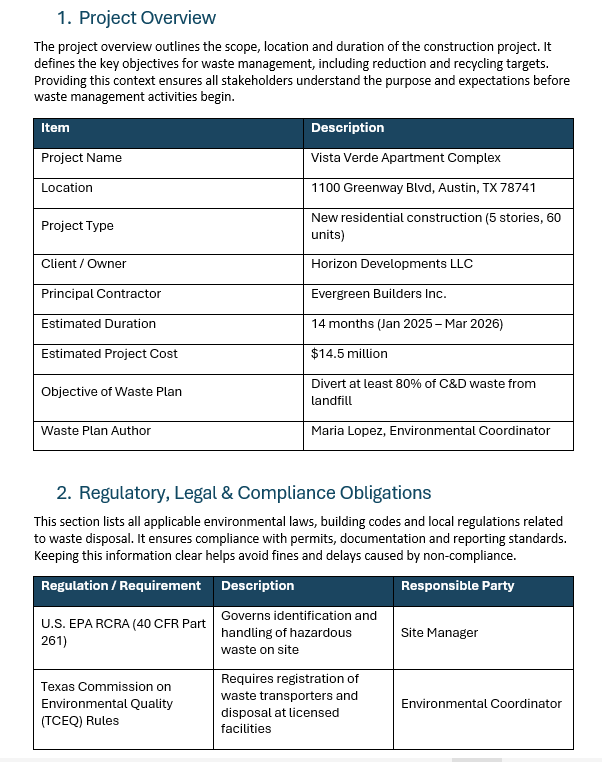
Get your free
Construction Site Waste Management Plan Template
Use this free Construction Site Waste Management Plan Template for Word to manage your projects better.
What Is Construction Site Waste Management?
Construction site waste management is the process of collecting, sorting, reusing and disposing of waste materials generated during a construction project. It ensures compliance with environmental laws while reducing landfill impact and optimizing resource use. Project management software enhances this process by enabling teams to organize, track, and document waste management tasks in real time, ensuring nothing is overlooked.
Using ProjectManager for construction site waste management provides structure and visibility. The Gantt chart connects waste management tasks to project phases and deadlines, making it easy to see dependencies and progress. Teams can assign tasks for material recycling, waste collection or reporting directly within the platform. With real-time dashboards and AI-powered reporting tools, managers can monitor disposal schedules, budget use and compliance metrics from one central location. Get started with ProjectManager today for free.
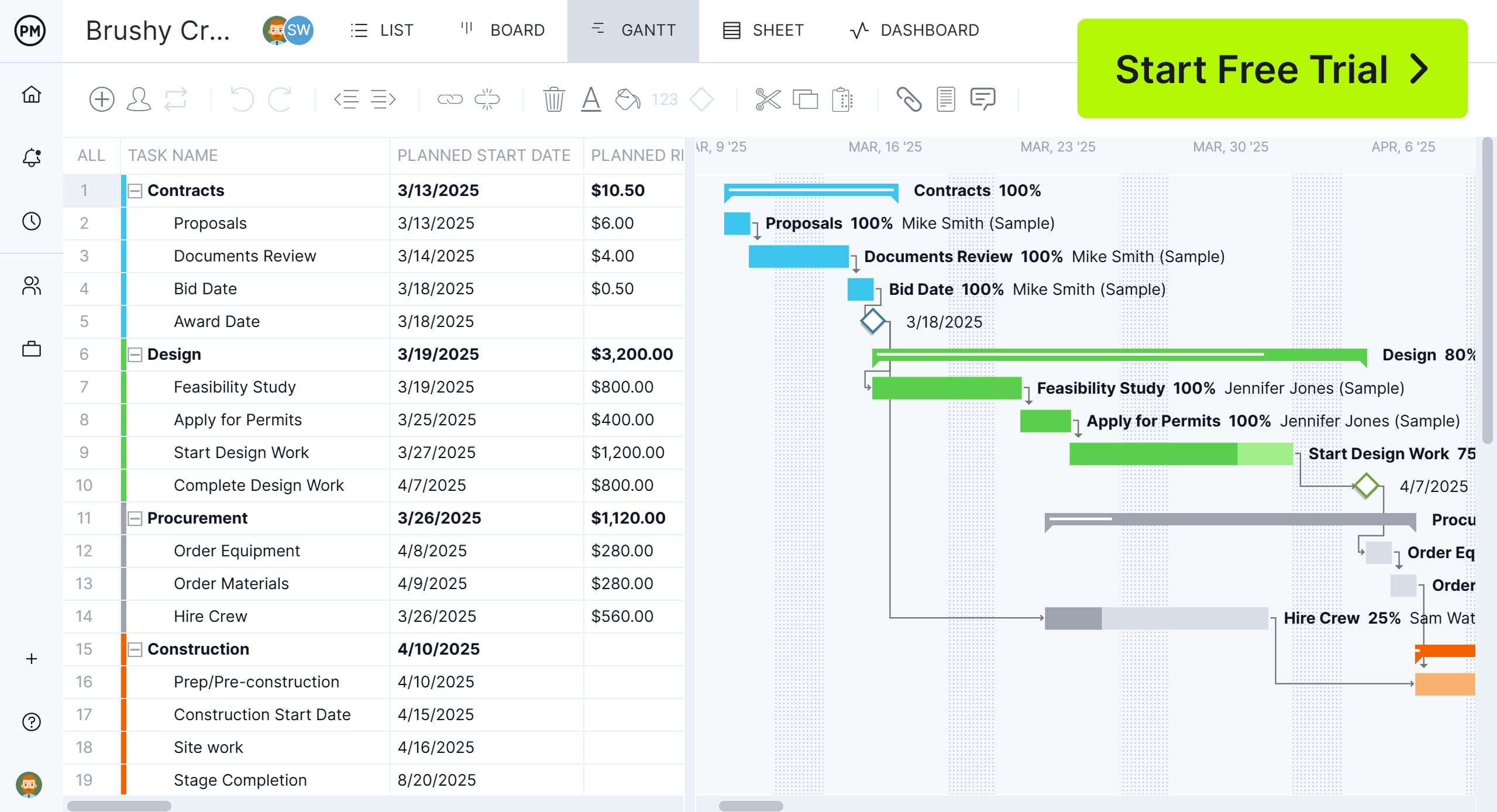
What Is a Construction Site Waste Management Plan?
A construction site waste management plan is a document that outlines how waste will be handled throughout a construction project. It details the types of waste expected, how materials will be reduced, reused or recycled and which procedures will ensure legal and environmental compliance. The plan assigns roles and responsibilities, sets waste reduction goals and defines disposal methods that align with regulatory and company standards.
It also includes logistics such as equipment use, off-site facilities and budget tracking to ensure efficient waste handling. Creating a comprehensive construction site waste management plan helps teams stay organized, cut costs and demonstrate environmental responsibility while meeting client and regulatory expectations.
Why Is It Important to Make a Construction Site Waste Management Plan?
A construction site waste management plan is vital for minimizing environmental impact, meeting regulatory standards and controlling costs. It helps reduce waste sent to landfills while improving recycling rates and resource efficiency. Proper planning also supports safety on site, lowers material expenses and boosts a project’s sustainability profile. By following a clear plan, teams can track progress, report compliance and maintain accountability at every stage.
Related: 10 Best Construction Project Management Software
How to Make a Construction Site Waste Management Plan
Creating an effective construction site waste management plan starts with identifying project goals, compliance requirements and waste sources. Each section of the plan provides structure for recording data, assigning responsibilities and ensuring that procedures are implemented correctly throughout the project lifecycle.
1. Project Overview
The project overview outlines the scope, location and duration of the construction project. It defines the key objectives for waste management, including reduction and recycling targets. Providing this context ensures all stakeholders understand the purpose and expectations before waste management activities begin.
2. Regulatory, Legal & Compliance Obligations
This section lists all applicable environmental laws, building codes and local regulations related to waste disposal. It ensures compliance with permits, documentation and reporting standards. Keeping this information clear helps avoid fines and delays caused by non-compliance.
3. Waste Baseline or Waste Forecast
The waste baseline or forecast estimates the quantity and types of waste expected during the project. This helps establish benchmarks for tracking performance and identifying potential waste reduction opportunities. Accurate forecasting improves budget planning and sustainability outcomes.
4. Waste Handling Plan
The waste handling plan describes how waste will be sorted, stored and disposed of on site. It includes instructions for separating recyclable materials, hazardous waste and general debris. Having defined procedures ensures safe and efficient waste processing.

5. Waste Handling Schedule
This section sets timelines for collection, removal and disposal activities. It coordinates waste handling with construction phases to avoid site congestion or delays. Scheduling also ensures consistent pickup and proper resource allocation throughout the project.
6. Roles and Responsibilities
Here, each team member’s duties are outlined to ensure accountability for waste management activities. This includes site managers, subcontractors and waste handlers. Clear role definitions help maintain consistency, efficiency and safety on site.
7. Logistics, Infrastructure & Equipment
This section details the on-site infrastructure used for waste handling, such as skips, storage areas and sorting zones. It also lists required equipment for loading and transport. Proper planning of logistics reduces handling time and prevents contamination between waste types.
8. Off-Site Facilities & Haul Routes
Off-site facilities and haul routes describe where and how waste will be transported for recycling or disposal. This includes identifying approved landfills or recycling centers and mapping safe transport routes. Planning these routes minimizes travel time and reduces environmental impact.
Related: 10 Free Construction Plan Templates for Excel & Word
9. Waste Management Costs and Budget
This section outlines all financial considerations related to waste management, including collection, transportation and disposal fees. It helps project managers monitor expenses and compare them against initial estimates. Budget tracking ensures cost efficiency and prevents overspending.
10. Monitoring, Reporting and Communication Guidelines
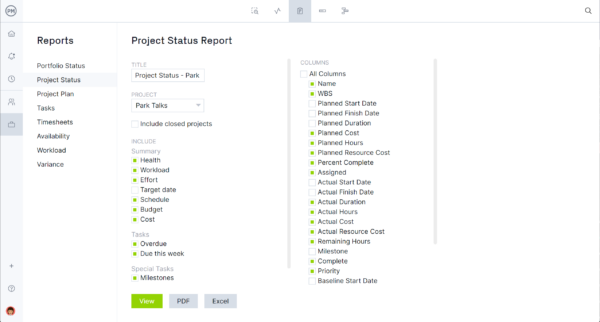
This part explains how waste data will be tracked, recorded and shared with stakeholders. Regular reporting supports compliance audits and sustainability reporting. Clear communication channels keep the project team aligned and informed throughout the process.
11. Potential Risks & Mitigation Actions
The final section identifies possible risks such as hazardous material exposure, equipment failure or non-compliance issues. It includes mitigation strategies to reduce these risks before they escalate. Proactive planning ensures safety and reliability across all waste management operations.
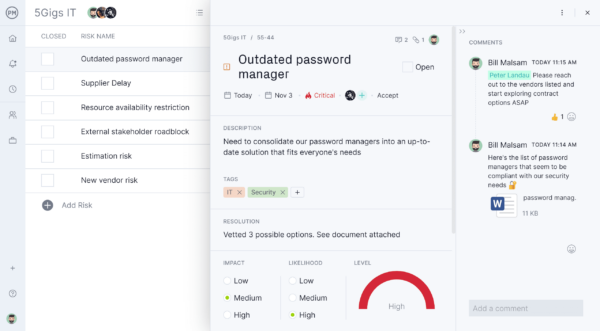
Construction Site Waste Management Plan Template
Download this free construction site waste management plan template for Word to help project teams organize and track all construction waste. Pre-formatted tables cover project details, regulatory compliance, waste handling, roles, schedules and costs, making it easy to implement a complete waste management strategy and maintain accountability on site.
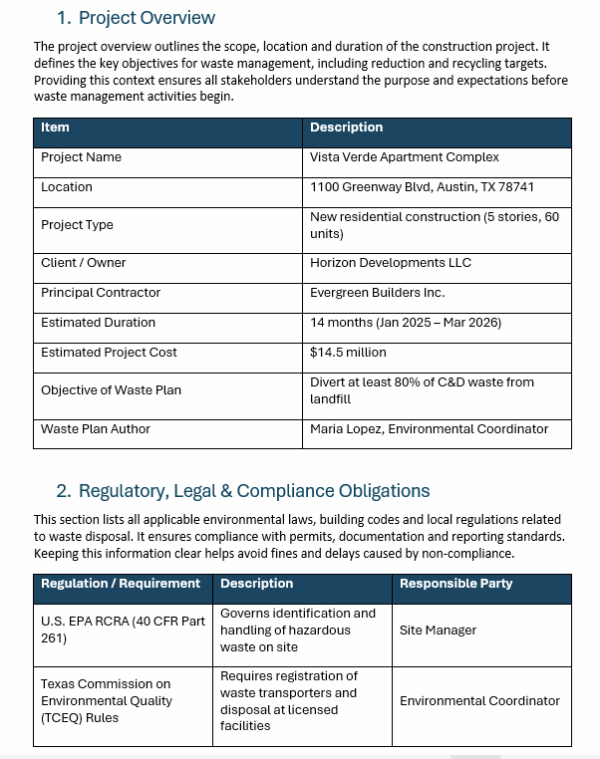
The template allows managers to assign responsibilities, monitor progress and report results. It supports sustainability, risk mitigation and compliance, helping teams meet diversion goals efficiently while keeping stakeholders informed throughout the project.
Construction Site Waste Management Plan Example
This example uses a real-life scenario to show how a construction site waste management plan is structured and implemented. Each section includes a blurb followed by a compact table that summarizes key data points for the Vista Verde Apartment Complex project. Use these examples to adapt the plan to your own site conditions and objectives.
1. Project Overview
Vista Verde is a five-story residential building with 60 units managed by Evergreen Builders for Horizon Developments. The 14-month schedule requires coordinated waste diversion efforts to meet an 80% C&D diversion objective. The waste plan author outlines scope, duration and high-level targets to align all trades and stakeholders.
| Project Name | Vista Verde Apartment Complex |
| Location | 1100 Greenway Blvd, Austin, TX 78741 |
| Duration | Jan 2025 – Mar 2026 (14 months) |
| Objective | Divert at least 80% of C&D waste from landfill |
2. Regulatory, Legal & Compliance Obligations
The plan lists federal, state and local requirements that affect waste handling, transporter registration and facility acceptance. Responsible parties are assigned for each regulation, so permits, manifests and reporting are managed. This prevents fines and ensures that diversion claims are auditable for LEED or local compliance reviews.
| Regulation | Description | Responsible Party |
| U.S. EPA RCRA (40 CFR Part 261) | Identification and handling of hazardous waste on site | Site Manager |
| TCEQ Rules | Registration of transporters and licensed disposal | Environmental Coordinator |
| Austin Ordinance 15-6-91 | Requires 50% minimum C&D diversion | General Contractor |
3. Waste Baseline or Waste Forecast
The forecast quantifies expected waste by material type and sets diversion targets to guide handling decisions and budgets. Estimates are based on similar projects and supplier takeback data to prioritize recycling streams. This baseline supports procurement choices and helps track performance against the 80% diversion goal.
| Material | Estimated Tons | Handling Method | Target Diversion |
| Concrete & Masonry | 480 | Crushed and reused as base fill | 95% |
| Wood | 90 | Separated and sent to biomass | 85% |
| Metals | 60 | Collected for scrap recycling | 100% |
4. Waste Handling Plan
The handling plan defines on-site segregation points, container types and the intended facility for each stream. It sets rules for partial interior collection of drywall and daily sorting of packaging to avoid contamination. Clear handling instructions reduce cross-stream contamination and improve recycling yield.
| Waste Stream | On-Site Segregation | Collection Point | Facility | Container |
| Concrete & Masonry | Yes | South yard | Austin Recycling Aggregates LLC | 20-yd roll-off bin |
| Wood | Yes | Material storage zone | Lone Star Biomass Center | Covered skip |
| Mixed Residual | No | South exit gate | Travis Landfill Site #4 | Sealed dumpster |
5. Waste Handling Schedule
The schedule coordinates collection frequency with major project phases so bins are available when needed and pickups avoid work interference. It increases collection during foundation and framing when debris peaks and reduces frequency during interior fit-out. Scheduled pickups keep the site tidy and reduce contamination risk.
| Project Phase | Expected Waste | Collection Frequency | Responsible Party |
| Site Preparation (Weeks 1–4) | Soil, vegetation, concrete demo | 2× per week | Site Superintendent |
| Foundation & Framing (Months 2–6) | Concrete, wood, metal scraps | 3× per week | Foreman & Subcontractors |
| Interior Fit-Out (Months 7–10) | Drywall, packaging, metal | Weekly | Interior Manager |
6. Roles and Responsibilities
Roles are assigned to ensure ownership of segregation, documentation and compliance. The environmental coordinator manages tracking and reporting while the site superintendent enforces daily practices. Subcontractors follow signage and report contamination so corrective action can be taken promptly to protect diversion rates.
| Role | Name / Org | Responsibilities |
| Project Manager | Daniel Reyes, Evergreen Builders Inc. | Approve and oversee implementation; ensure compliance |
| Environmental Coordinator | Maria Lopez | Track waste quantities; prepare reports |
| Hauling Contractor | GreenPath Logistics | Transport segregated waste; provide manifests |
Related: Corrective Action Plan Template
7. Logistics, Infrastructure & Equipment
This section lists on-site infrastructure needed to sort, store and protect waste streams, including color-coded bins, covered skips and a temporary storage area. Regular maintenance and weekly inspections keep equipment serviceable and prevent contamination caused by damaged containers or poor signage.
| Item | Description | Quantity / Location |
| Waste Bins | Color-coded 10–20 yd bins for each stream | 6 bins across site zones |
| Covered Skips | For wood and cardboard to prevent moisture | 2 units near storage area |
| Temporary Storage | Covered area for sorted recyclables | Northeast corner |
8. Off-Site Facilities & Haul Routes
Approved facilities are mapped with distances and permit numbers so haulers follow compliant routes. Selecting secondary facilities within a 25-mile radius provides contingency options if the primary facility is unavailable. This minimizes haul time and ensures consistent recycling acceptance.
| Facility | Material Type | Distance (mi) | Transport |
| Austin Recycling Aggregates LLC | Concrete, masonry | 7.5 | GreenPath Logistics |
| Lone Star Biomass Center | Wood waste | 12 | GreenPath Logistics |
| Travis Landfill Site #4 | Mixed residual waste | 9 | GreenPath Logistics |
9. Waste Management Costs and Budget
Budget items cover bin rental, transport fees, processing costs and dedicated labor to segregate waste. A contingency allowance addresses unexpected disposal needs. Tracking actual expenses against this budget helps keep waste costs proportional to the overall $14.5 million project budget.
| Cost Category | Estimated Cost (USD) | Notes |
| Bin rental and collection | $9,000 | 6 bins over 14 months |
| Transport and tipping fees | $13,500 | Landfill and recycling fees |
| Total Estimated Budget | $46,000 | 0.32% of total project cost |
10. Monitoring, Reporting and Communication Guidelines
Daily inspections, weekly volume tracking and monthly diversion summaries provide a documented audit trail. Toolbox talks keep subcontractors informed and mid-project reviews allow plan adjustments. Digital manifests and dashboard reporting simplify compliance reporting and support LEED or company ESG submissions.
| Activity | Frequency | Responsible Party | Method |
| Daily Site Inspections | Daily | Site Superintendent | Checklist logged in site app |
| Waste Volume Tracking | Weekly | Environmental Coordinator | Spreadsheet & digital dashboard |
| Final Waste Report | Project close-out | Environmental Coordinator | Submitted to client and archived |
11. Potential Risks & Mitigation Actions
Key risks include contamination of segregated streams, haul delays and extreme weather. Mitigation measures include daily inspections, backup hauler agreements and covered storage. Assigning responsibility for each mitigation action ensures prompt response and protects diversion rates and safety on site.
| Risk | Likelihood | Impact | Mitigation |
| Contamination of segregated waste | Medium | Medium | Daily inspections; refresh worker training |
| Unavailability of recycling facilities | Low | High | Identify secondary facilities within 25 mi |
| Extreme weather affecting storage | High | Medium | Use covered skips and drain protection |
Free Related Construction Project Management Templates
These free construction project management templates help teams plan, track and execute projects efficiently. Each template is designed to simplify complex processes, improve accountability and keep all stakeholders informed throughout the project lifecycle.
Construction Safety Plan Template
Download this free template to guide project managers in creating a comprehensive safety plan. It includes sections for hazard identification, safety procedures, emergency protocols and compliance tracking to ensure a safe working environment on site.
Construction Daily Report Template
Use this free template to track daily project activities, labor hours, equipment usage and weather conditions with this template. It helps maintain accurate records, identify issues early and keep stakeholders updated on project progress.
Construction Scope of Work Template
This free template defines project deliverables, responsibilities and objectives clearly with this template. It ensures that all parties understand the scope, minimizes disputes and provides a reference for progress tracking and contract management.
How ProjectManager Helps Manage Construction Projects
ProjectManager makes managing construction projects easier by providing multiple project views that give teams complete oversight. Users can switch between Gantt charts, kanban boards and task lists to plan, schedule and visualize complex construction timelines. Each view links tasks to budgets, resources and dependencies so project managers can see the full picture and adjust plans quickly as conditions change on site.
Optimize Resource Management
ProjectManager helps construction teams allocate labor, equipment and materials efficiently. Color-coded workload charts show availability and can be used to balance workloads to boost productivity. The team page allows managers to see assignments, progress and priority. Timesheets can be updated directly on the job site with our mobile app, making labor tracking real-time. This reduces overstaffing, prevents delays and ensures materials are delivered when and where they are needed, keeping projects on budget.
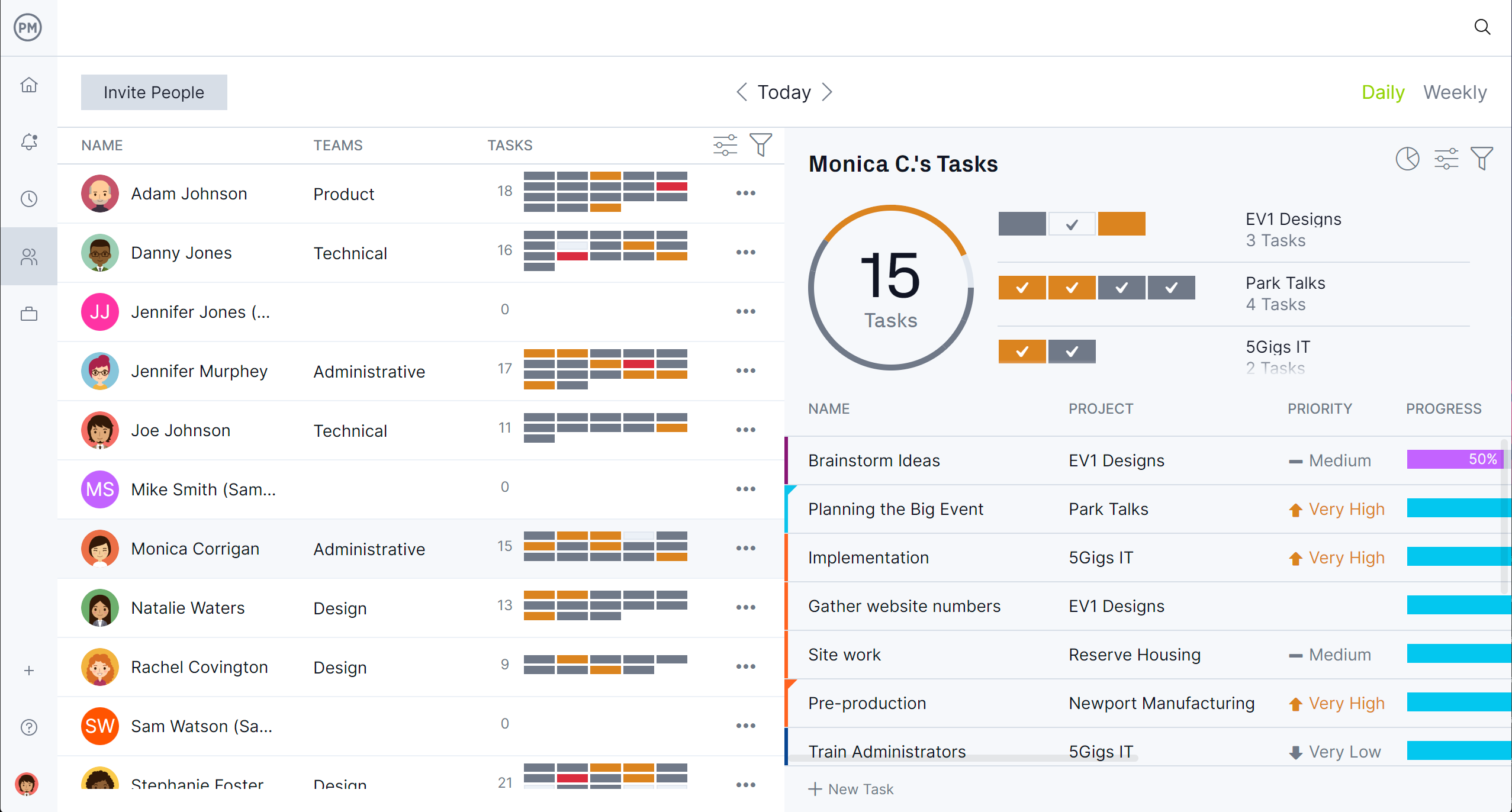
Enhance Project Tracking
Tracking progress is simple with ProjectManager’s AI-powered reporting tools that instantly summarize and advise. Teams can generate customizable reports that highlight task completion, budget variances and resource usage. Alerts notify managers of potential delays or overspending, and real-time dashboards show progress against milestones. This transparency helps stakeholders stay informed and allows managers to make data-driven decisions quickly, maintaining control over every phase of construction projects.
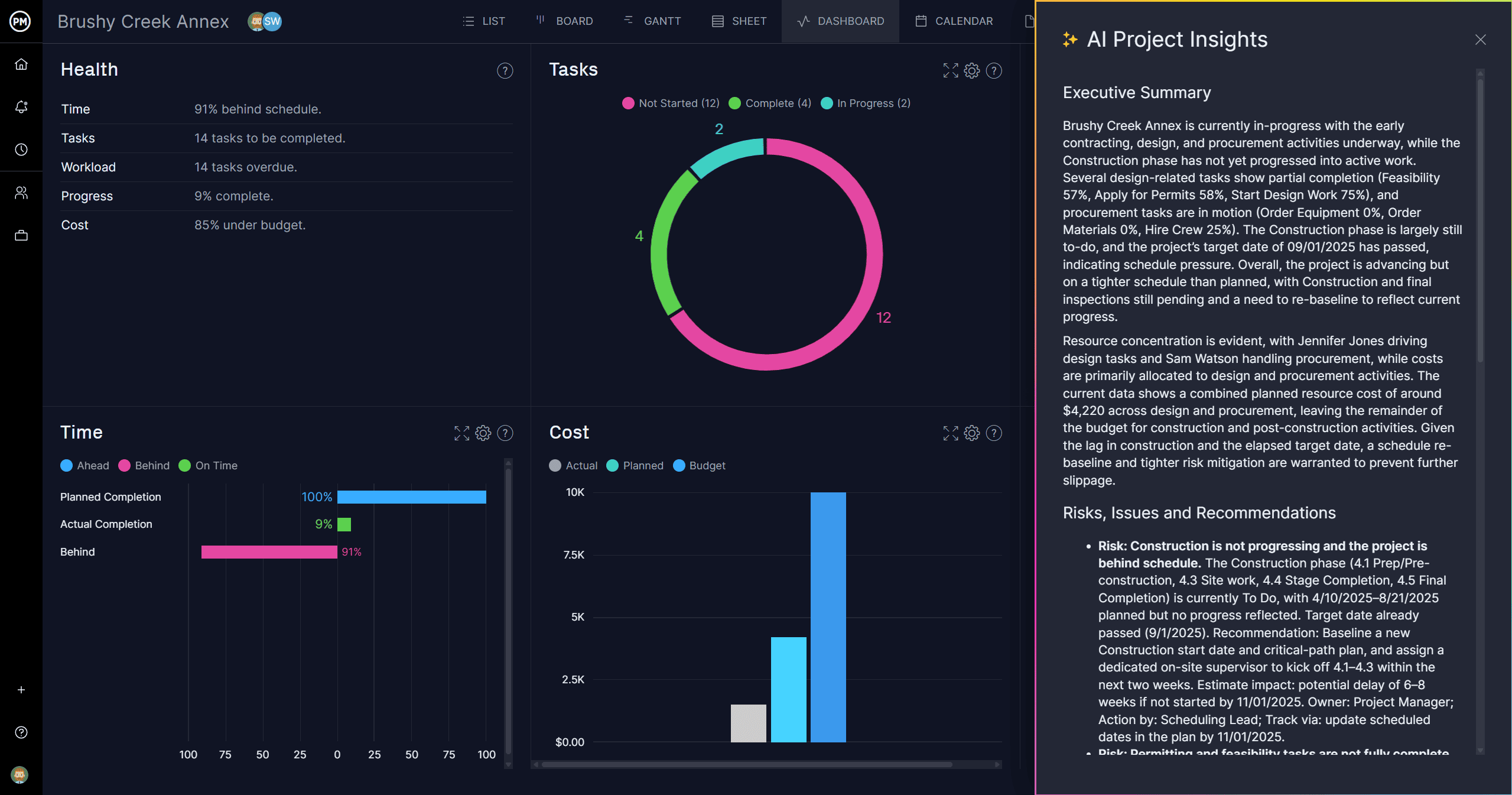
Related Construction Project Management Content
Now that we know what a construction site waste management plan is, readers who care to expand their knowledge of construction project management are encouraged to follow the links below. They lead to blogs on construction documents, different types of construction projects and much more.
- 32 Construction Documents (Templates Included)
- 10 Types of Construction Projects with Examples
- 18 Construction Methods and Techniques
- How to Make a Construction Plan
- Construction Phases: Documentation, Templates & Steps
ProjectManager is online project and portfolio management software that connects teams, whether they’re in the office or on the job site. They can share files, comment at the task level and stay updated with email and in-app notifications. Get started with ProjectManager today for free.

